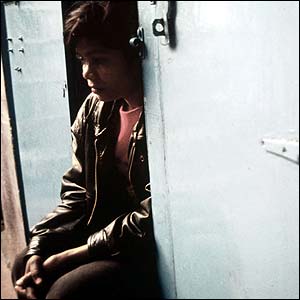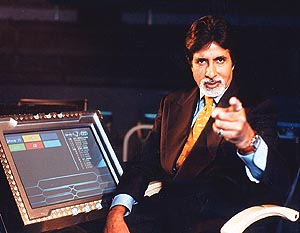 While I was talking to a senior doctor about child abuse, his response shocked me, “That occurs only in U.S. It’s very rare in India.” What shocked more rather than his ignorance was how hidden this brutal yet common crime remains in our society. Though it is globally prevalent, in India, as in many developing nations, the trend of the issue is just the tip of the iceberg has been reported. Dr. Parvathy V Das.
While I was talking to a senior doctor about child abuse, his response shocked me, “That occurs only in U.S. It’s very rare in India.” What shocked more rather than his ignorance was how hidden this brutal yet common crime remains in our society. Though it is globally prevalent, in India, as in many developing nations, the trend of the issue is just the tip of the iceberg has been reported. Dr. Parvathy V Das.
"Suffer little children to come unto me, and forbid them not: for such is the kingdom of God. Luke 18:16.
Statistics
Ministry of Women and Child Development1 found that 2 out of every third child in India below 15 years are physically abused-a staggering figure 66.6% of total children in India. Among children who were physically abused, 88.6% of cases the perpetrators were their own parents. The same survey revealed that 53.22% out of a sample size of 12,447 from 13 different states reported some of form sexual abuse. The forms of which ranged from severe — such as rape or fondling — to milder forms of molestation that included forcible kissing. Andhra Pradesh, Assam, Bihar and Delhi turned out to have the highest incidence of both physical as well as sexual abuse. In US where absolute rules define child abuse and where functioning Child Protection Services exists, 12.3 of every 1,000 American children suffer abuse (2006 stat2). Kids die every day in the U.S. because of abuse or neglect, most of them babies or toddlers.
The Trends
I am not talking about smacks which come part of discipline. But I refer to tortures, scourges, burns, broken bones, starvation, shaken babies, being dunked into tubs of boiling water, being dragged along the floor and flogged, being tied to furniture or locked in a closet or dark room for hours or days. There is a chasm of difference between a slap on an unmanageable child and twisting a child’s arms till the bone breaks.
As we have seen, 88.6% of the abusers were persons known to the child or someone in a position of trust and responsibility. They may be family friends, neighbors or babysitters. About one-third of abusers were related to the child. Hence, most children did not report the matter to anyone. Unreported incidents are overwhelming.
Reuters reported India to be the Sixth most dangerous place3 in the world, for children. India is worse than places like Palestinian territories, Myanmar and Chechnya, which are hotspot conflict areas. Child labor, minor trafficking and feticide are quite rampant in our country. Even in every instance of abuse on the streets, we find that the principle aggressor is a caretaker, probably a relative who knows the kid. It is distressing to note that most abuse begins at home.
An Indian issue
Giving a definition to child abuse causes confusion between ‘an act of discipline’ and that of ‘displaced anger and frustration’ on the part of the parent. Parents or any caretaker justifies such displaced anger as discipline. Physically abusive parents have issues of anger, excessive need for control, or immaturity that make them unable or unwilling to see their level of aggression as inappropriate. Alcoholism is a major factor that makes parents abusive.
Most abusive parents were themselves abused physically or sexually as a child. Combined with all this is moral relativism of India which justifies everything and even glorifies evil as good. Just as each individual has his own god, each person his own morality, no one has the right to question about the gods we Indians worship and no one has the right to question our morality. Just as there are fights among many gods we too fight, just as the powerful god wins only the powerful win in India. This is shown by what we do.
What we do and why do we do it?
Adults have the capacity to protect themselves and others but when one struggles to get ahead, it is a tendency to exploit another who is weaker. Human wickedness is evident when we take advantage of our own weaker fellow beings. This is proved since times immemorial by stories of rapes, child abuse, dowry deaths, wife battering, elder abuse etc. In every instant the victim is a weaker person. This shows we are no different from Cain who killed his brother. Today, we humans fear nobody but ourselves; we have such fear because we consider our greatest enemies to be humans (we ourselves).
The Child and the Adult
Gabriela Mistral (Nobel Literature 1945) rightly describes this as …”….our worst crime is abandoning the children, neglecting the fountain of life. Many of the things we need can wait, the child cannot, right now is the time his bones are being formed, his blood is being made and his senses are being developed. To him we cannot answer ‘Tomorrow’. His name is ‘Today’….” A child is in a stage of development, acquiring skills to prepare him or herself for adulthood. A child is in the receptive stage. He needs care, protection and guidance. Who are the ones who should care, protect and guide a child? It is the adults who are the role models for a child. They are his assurance of security. However, when the adult he trusts abuses him, it creates havoc in his development. It leaves lasting effects on his personality, which would persist till his last day. It’s like a walk over wet cement. The imprints of the footsteps remain and cannot be removed after the cement has dried. Every one
of us were instructed and influenced by our environment when we were kids. Whatever we learned as kids we still hold on to, even though we do it unconsciously. Our environment enabled the formation of appropriate psychic structures within our minds which formed templates to our future behavior. We looked at our parents to know what was right and identified with them throughout our growth, until we reached an age to start guiding ourselves.
An abused child – The psychology
Most often the child does not tell anyone about the abuse, especially when it is sexual. For the child, the abuser is a good person, because everyone else thinks so. Most children even when they are as small as 2 yrs know that something bad has happened even though they do not have a clear picture. But the abuser is at large and he is glorified. So what happens within the child’s mind is a misconceived notion of guilt and shame, later leading to a low self esteem as they grow up. Kids who have been repeatedly hit and tortured at home may feel that adults are entitled to misuse their body, simply because they are older. On the other hand it could also lead to dejection and anger causing development of aggression.
American Academy of Child and Adolescent Psychiatry4 has come out with evidence based studies that links childhood abuse to numerous psychiatric illnesses like depression, suicidal tendencies, delinquencies, antisocial behavior, and even serious disorders like Dissociate Identity Disorder (DID) commonly known as Multiple Personality Disorder. In DID a child who is constantly abused tries to escape from the psychological trauma of the incident by assuming that everything happened to another person. An abused girl would say, ‘I was not the one who was beaten. It was Jamie who was beaten and had horrible things done to her.’ when actually both Jamie and herself are the same person. A man who has been tortured for years as a prisoner of war, does not develop DID, but a child who is physically abused does. This shows how fragile the mind of a child is. And sadly most abusers themselves were abused as children. A sexually abused child develops a distortion in his sense of right and wrong. There is development of either an excessive indulgence or a total aversion to sexual nature.
Failures in family and society
Law and family are two key factors in dealing with this evil. But sadly in our country both have failed when it comes to child abuse. Even when the child reports, the incident is often hushed up. In our patriarchal society, adults consider children as a property with the freedom to treat them as they like. But disciplinary actions in such a situation which are very harsh are actually manifestations of the parents inability to raise children and their frustrations which find a form of displaced anger. The same applies to teachers and employers of kids who find the child a soft target for their feelings. a child has a right to live with dignity and freedom from violence. A child has a right to be loved for by everyone, not just by parents.
Neglect as Abuse
Abuse of a child results not only from doing but also from not doing what has to be done for the benefit of the child. When the parents resort to passive aggression by neglecting the childs needs, it also constitutes abuse. A neglected child can be identified by its inability to cope with normal expectations of a child of same age. Incompetence of the parent in this regard becomes evident in a child with delayed speech. In the first year of a child’s growth effective stimulation from the parents’ side is required to help the child develop speech. Care for the child also includes providing appropriate education and adequate medical care.
Emotional Abuse
Emotional abuse is another form which includes belittling the child with regular use of derogatory terms. Another method is to constantly blame the child making him/her a scape goat. Severe forms will include terrorizing and threatening the child. Extreme actions include confinement in a dark room and tieing up the child for long periods. Emotional abuse results in severe cognitive imapirement and thought disorders, which can progress to illnesses and stunted growth. Since growth and development is an essence of being a child, abuse primarily manifests as failure to attain the required growth. Mentally traumatised children are proven to develop disorders such as anorexia nervosa, when they grow up.
What can be done?
Speak to your child. He/She is not your punch bag. They belong to God and so does their body. When parents treat the child’s body with respect, children tend to demand that others treat them in the similar manner. Ensuring trustability of the parents in a childs mind is essential to prevent the child being abused. Trustworthiness enables the child to bring up any untoward incidents to the parents notice, before it gets out of control.Often sexual abuse during childhood remains unknown to the parents. During counseling sessions it is often the psychiatrist who might ever inform the parents about the history of their depressed adolescent.
The first reaction from the parent’s side is, ‘Why didn’t he/she tell us until now?’ But the parents forget that they haven’t provided the ambience and atmosphere of openness and trust for the child to speak. In all this the gap between the kid and the parents become evident. Yet we speak about close knit families and are proud about less divorce rates. Though the number of cases which are reported, in comparison to actual prevalence is far too less, which proves that the ties are not so fast.
Consider the number of wife battering cases where the wife continues in an abusive relationship glorifying the abusive husband as God, forcing to ask, “Are gods abusive”? With such situation prevalent in India are we bringing up a weak society with dependent personalities?
Legislative failure
Legislation in our country has not substantially emphasized the duties of a parent to the child, rather has enhanced the ‘ownership’ rights by stressing on natural guardianship. India still does not have solid law enforcement with regard to protection of an abused child. When a doctor treats a kid, it is not mandatory for him to rule out child abuse in our country. And even if it is the issue, what happens routinely is silence. An abused child almost always goes back to the same abusive parents, except may be in few instances where the media has interfered. American laws in this regard enforce that a doctor suspecting abuse has a duty to report as well as protect the child. He has to not only treat the child, but is empowered t
o remove the child from the abusive situation and as well as report the matter to child protection services. It seems we adapt best practices only in business and for material gain which proves we value money but not vulnerable children.
How can we suspect whether a child is being abused?
Signs of abuse include multiple bruises, imprints on the skin of the rod or hand of the adult used to hit the child, well defined burn marks etc. When asked to explain the cause of the mark, the child would answer very vaguely about falling or spilling a hot dish. Think hard before you accept a child story by its face value. Burn marks involving both buttocks of a child results from the child being held by arms and legs and dunked in a hot tub, rather than an accident fall into hot water. It’s further a usual practice to burn a girl’s face with a heated spoon or ladle taken directly from the stove.
Battered baby syndrome
I once remember an incident where a one year old boy was brought to the emergency department in a semi conscious state. X rays revealed multiple fractures of both his legs and hands, which were in various stages of healing. This was enough sign that the child had been repeatedly hit with a great degree of violence. There were scalds all over his body because hot water was thrown over him, when he peed inside the house. Small wounds made by a sharp knife were seen in multiple places. The mother said that the child was harmed by its siblings aged 9 and 7, but obviously the degree of violence required for the damage was surely done by an adult. In this case, on confrontation, the mother herself accepted to have abused the child. What shocked me in this incident was that the child went back to the same house after treatment.
Another form of abusing very small babies is called ‘Shaken Baby Syndrome’. In this the caretaker frustrated by the babies crying, shakes the baby violently and repeatedly, so that the head of the baby bounces, causing small bleeds within the brain resulting in neurological damage.
An odd form of child abuse is called Munchausen’s syndrome by Proxy. Here the parent, usually the mother, makes the child ill or fakes illness in the child, so as to gain sympathy and attention. The range of deeds here can range from altering the reading in a thermometer to extreme resort like feeding the child poison. This is unmistakably abusing the child for self satisfaction. The problem here is that the child is not aware that it is being abused and tends to grow up as a hypochondriac or become a truant. The child being made to witness wrong and participate in a parent’s wrong is evil and abuse as well. It teaches the child to accept and act in an evil way with justification.
Corporal Punishment
Using physical force, to discipline a child, amounts to Corporal Punishment. But this is detrimental to the child in that rather than learning the difference between right and wrong and doing the right, what the child learns is that physical violence is right. It sends the message to the child that physical violence is the appropriate response to problems and opposition.
Identifying sexual abuse
Sexual abuse in a child is difficult to uncover. It goes undetected because the physical signs need not be obvious. Behavioral clues are more important in this regard. Since the aggressor is usually someone whom the child knows, this must be suspected when the child shows extra fear or avoidance of a particular person. The child may otherwise develop indulgent or seductive behavior. The child can also become withdrawn and avoid company. No matter what an adult might say in defense, sexual abuse is never a child’s fault. The child did not invite the activity and the adult’s behavior is wrong.
Children are immature to handle psychological effects of sexual stimulation. Apart from the knowledge that it is wrong they are encompassed with fear. Betrayal from the aggressor forms distrust within the child. Such a child never learns to trust. Added to this the child cannot reveal the matter to anyone because of fear of being not believed. Equally traumatizing is the feeling of shame, which can lead to a low self esteem.
Evil triumphs when good men do nothing. Should we be silent?
When it comes to involving in another family’s issues, we are reluctant. But when you hear the loud cries of a child in the middle of the night in the neighborhood, don’t turn off the lights and go to sleep, because when morning comes it might be too late. When it comes to child abuse we do not have the option of keeping mum. We raise voices about abstinence and AIDS to keep us safe. Who would keep our children safe? Who will be the future if there are no children? We make a lot a noise about abortion and the unborn child. Who is there to speak for the one on the earth already?
If we do not speak then we have to say, “I looked again at all the injustice that goes on in this world. The oppressed were crying, and no one would help them. No one would help them, because their oppressors had power on their side. And I envy those who are dead and gone; they are better off than those who are still alive. But better off than either are those who have never been born, who have never seen the injustice that goes on in this world” ECCLESIASTES 4:1-3.
References
1 – Ministry of Women and Child Development
2 – 2006 stat
3 – Reuters reported India to be the Sixth most dangerous place
4 – American Academy of Child and Adolescent Psychiatry
{moscomment}







I must confess that I didn’t read the article till the end. I couldn’t.
It was ummm, overwhelming.
Mixed emotions and memories, including that of a short film we made two years back called The Sacred Face, which looked at child abuse from an abuser’s perspective. It was based on a real incident where the father – an IAS officer in Delhi – was abusing his five year old daughter.
At the end of the film as the credits ran, we included voice-overs of real people whom we had shown the film after it was freshly edited. To quote: “These kinds of things happen only in America, you are just making up a story like this to project India in a bad light and win international awards”; “Such incidents happen only in low class families. In educated families and all, I don’t think…”; “Why did you have to make a film on an issue like this? There are so many other issues – why did you have to select just this one?”; “Films like this is public harassment – public mental harassment”; “Issues like this must never been put on the face, making it difficult for the audience to digest reality. You should show them only metaphorically – like a flower, burning in the pyre or something such, as an alaap wails in the background – and then it would be comfortable to address and debate on these issues.”
‘Break the silence’ is a clichéd governmental catchphrase, but I can’t find anything else more apt. Thanks, Parvathy.
I agree. Indians like to pretend that we live in a FAKELY ideal society. We need to address this. I’ve lived in America and at least victims have access to support, resources and the victims are not blamed for it, like in India. We need to wake up and speak up for this immorality.
thanks for responding. our country needs to aggressively defend against this injustice done to our kids
It is sad that we do not speak about child abuse in the Church. We do not ask the Church to stand up for a Child specially for an abused Child, Just as Christ would do. If the abused Child speaks about her/her story, I think many in the Church will look down on them and ask them to shut up, and will go to any extent to silence them, we treat abusers as saints and the Child as a beast. We live with confused morals. Child is no longer an individual but has become a thing and property to be owned, the reason for all this is not what the Bible teaches but our own ignorance of God and his word [The Bible].
Yes, Indian church culture is not much different from secular indian culture. I’m appalled at how Christians or the church treats abuse victims.
Years ago, I was gang raped. When I mentioned this to my old Indian church, I was immediately the ‘bad girl’ and people shunned me as if I was a leper. People made all kinds of assumptions such as that I was acting seductive, too flirtatious and did something to deserve that rape.
The truth was that I was coming home from school, a group of guys kidnapped me and forced themselves on me. Even though, the church preaches that God will forgive & restore me, but in society and church, I’ll still be a second-class citizen.
Talk about hypocrisy. I don’t go to an Indian church anymore. In fact, I’m in an American, multicultural church and I can say they are more accepting. I know this sounds bad and may sound prejudiced towards my own culture but it’s true.
I am really troubled by the apathy of our Churches in treating the victims of man’s lust. If a woman is abused, they blame the dress-code and everything of that woman. In contrast Jesus Christ said: “And if thy right eye offend thee, pluck it out, and cast it from thee: for it is profitable for thee that one of thy members should perish, and not that thy whole body should be cast into hell.” Matthew 5:29. Jesus did not ask woman to sit in home or wear purdah. Jesus asked men to pluck thier eyes if they feel lust towards a woman. What a contrast between Jesus Our LORD and God and today’s so called leaders of the Church. In Christ. Your brother Jerry
Okay, that was a bit off topic. But what can be done? Can we push for laws? Making laws is one thing but enforcing them is tough. Or how about education or discussion in churches? and beyond like schools, organizations, villages, cities and others.
Dear Sis Lydia,
Could you please send a mail to us at [email protected]
We would like to network with individuals like you and Dr. Parvathy to see what can be done together.
Sakshi Administrator